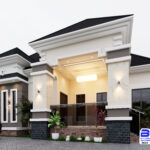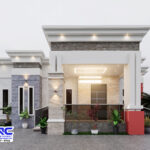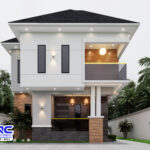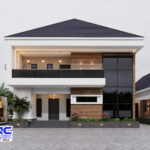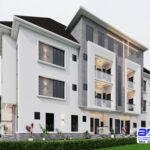In Nigeria and around the world, one of the major threats to building durability is water damage especially when it affects the foundation.
If water seeps into your building’s foundation, it can cause cracks, mold, weakening of the structure, and even total collapse over time.
This is why foundation waterproofing is not just a luxury it’s a necessity, especially in areas with heavy rainfall, high water tables, or swampy ground.
In this article, Bullionrise consult will break down the best foundation waterproofing methods, how they work, and which one is most effective for long-lasting protection.
Table of Contents
ToggleSee related – What is the best way for soil stabilization
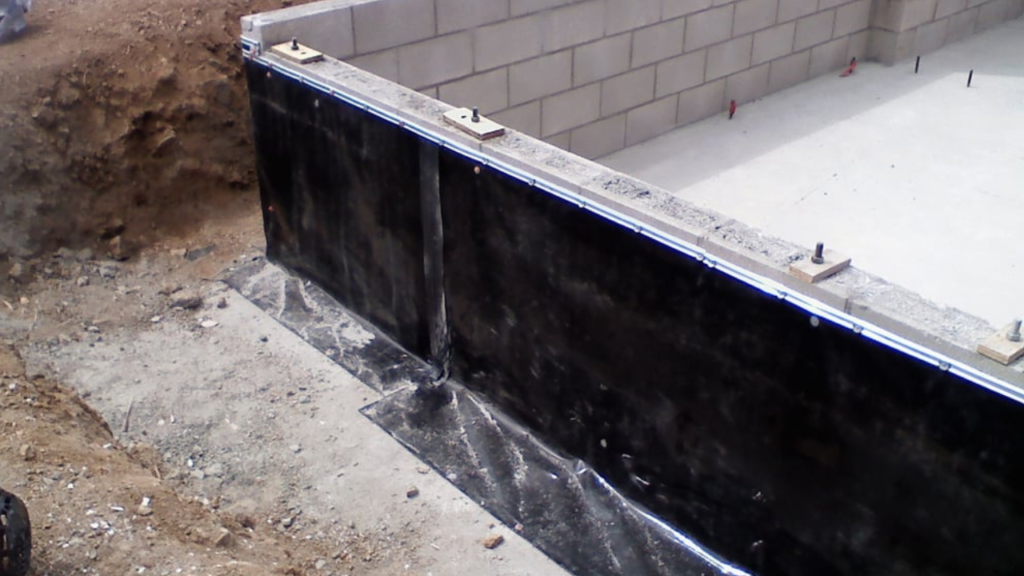
Why Foundation Waterproofing Is Important
- Prevents structural damage caused by water pressure and erosion
- Stops mold and mildew from forming in basements or ground floors
- Improves indoor air quality
- Increases building lifespan and value
- Protects interior finishes and electrical systems
See also – dpc vs dpm | what is the difference
Common Foundation Waterproofing Methods
Let’s take a look at the most widely used methods of foundation waterproofing:
1. External Waterproofing (Best Overall Method)
How It Works:
This involves applying waterproof coatings or membranes to the outside walls of the foundation before backfilling.
It blocks water from ever reaching the foundation wall.
Common Materials Used:
- Bituminous coating (black waterproof “tar”)
- Rubberized asphalt
- Liquid waterproofing membrane
- HDPE sheets (high-density polyethylene)
Pros:
- Very effective and long-lasting
- Protects against water and soil pressure
- Ideal for areas with high groundwater levels
Cons:
Requires excavation around the building
Best done during construction, not after
Can be more expensive
Best For:
New buildings, especially in waterlogged or rainy areas.
See also – Which foundation is suitable for which soil?
2. Internal Waterproofing (Secondary Defense)
How It Works:
This method focuses on managing water that has entered the foundation.
It includes sealing cracks and using drainage channels or sump pumps.
Common Solutions:
- Cement-based waterproof coatings
- Water-resistant sealants
- Interior drainage systems
- Sump pumps
Pros:
- Easy to apply after construction
- Helps reduce dampness in basements
- Affordable
Cons:
- Doesn’t stop water from entering — just controls it
- Not a full solution for serious water pressure
Best For:
Basement renovations or minor damp problems.
3. Drainage Systems (Supportive Method)
How It Works:
These systems are installed around the foundation to redirect water away from the building.
Examples:
- French drains (perforated pipes wrapped in gravel)
- Surface drainage slopes
- Gutters and downspouts
Pros:
Prevents water accumulation near the foundation
Reduces pressure on walls
Cons:
Requires regular maintenance
Not enough on its own in high water table areas
Best For:
All buildings — as a complementary solution.
See also – What is raft foundation | advantages and disadvantages
So, What’s the Best Method?
Best Overall Waterproofing Method: External Waterproofing + Drainage System
For most Nigerian environments especially in Lagos, Port Harcourt, Warri, Bayelsa, and other flood-prone areas the best approach is:
External waterproofing combined with a proper drainage system.
This combo gives full protection by:
- Stopping water before it touches the structure (external membrane)
- Redirecting surface and groundwater away (drains and slopes)
For even stronger protection in basements or underground structures, you can add internal waterproofing as backup.
Waterproofing Tips for Nigerian Builders and Homeowners
- Start early: The best time to waterproof is during construction
- Do a soil and water table test before building
- Always slope the land away from your house
- Use quality materials — don’t compromise
- Consider a professional waterproofing contractor for large projects
See also – pad foundations explained | pros and cons
Conclusion
Waterproofing your foundation is one of the smartest investments you can make when building in Nigeria.
While there are several methods available, the most effective waterproofing method is external waterproofing with a supporting drainage system.
It gives long-term protection, saves you money on future repairs, and ensures your home or building stays dry, safe, and strong.
Frequently asked questions
What are the most effective waterproofing methods for foundations?
- Exterior Waterproofing: Involves applying a waterproofing membrane, coating, or sealant to the outer walls of the foundation. This method prevents water from penetrating the structure.
- Interior Waterproofing: Includes using sealants or coatings on interior foundation walls and installing systems like sump pumps or drainage channels to manage water infiltration.
- Drainage Systems: French drains and perimeter drains help redirect water away from the foundation.
- Liquid Membranes: Spray-applied or rolled-on liquid waterproofing that creates a seamless barrier.
Each method works well depending on site conditions, but exterior waterproofing is often considered the most effective.
How does a waterproofing membrane protect a foundation?
A waterproofing membrane acts as a physical barrier between the foundation and moisture.
It prevents water infiltration by sealing cracks and pores in the foundation walls.
Membranes can be made of materials like rubber, bitumen, or polymer, and are commonly applied externally to provide long-term protection.
What is the difference between interior and exterior foundation waterproofing?
- Exterior Waterproofing: Focuses on keeping water away from the foundation by addressing external sources. It involves applying waterproofing materials to the outside walls and installing drainage systems.
- Interior Waterproofing: Manages water that has already infiltrated by sealing internal cracks and installing pumps or drainage channels to direct water away.
Exterior waterproofing is preventive, while interior waterproofing is corrective.
Are there eco-friendly waterproofing options for foundations?
Yes, eco-friendly options include:
- Green Sealants: Made from non-toxic materials like soy-based or water-based sealants.
- Drainage Systems: Use natural methods to redirect water without chemicals.
- Recycled Membranes: Waterproofing membranes made from recycled rubber or polymers. These options minimize environmental impact while protecting foundations.
How much does it cost to waterproof a foundation?
The cost depends on the method used, the size of the foundation, and the site’s conditions. On average:
- Exterior Waterproofing: ₦2,000 to ₦6,000 per square meter.
- Interior Waterproofing: ₦1,500 to ₦5,000 per square meter.
- Drainage systems like French drains may cost ₦100,000 to ₦300,000 or more, depending on complexity.
Prices may vary based on location and materials.


